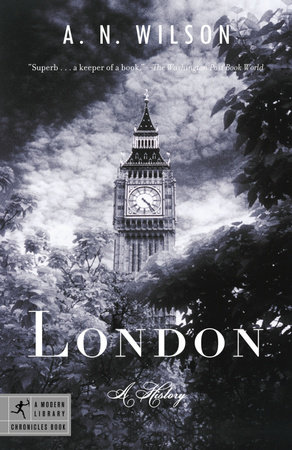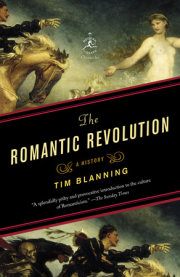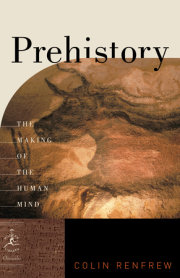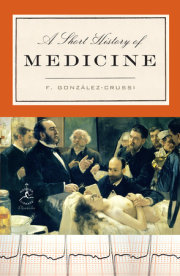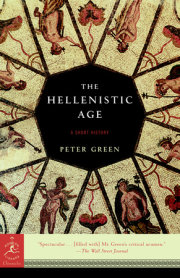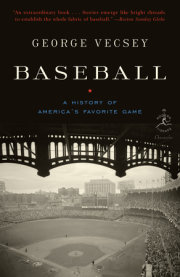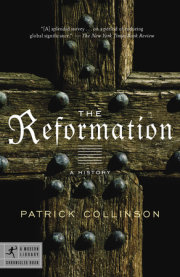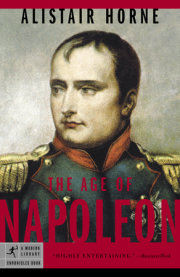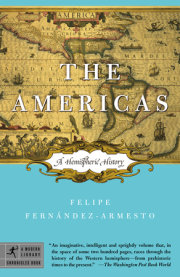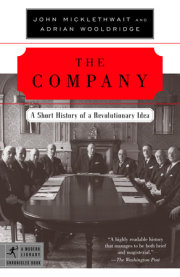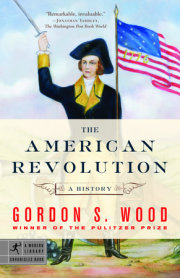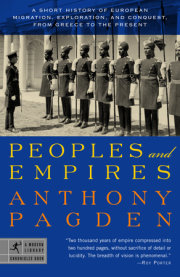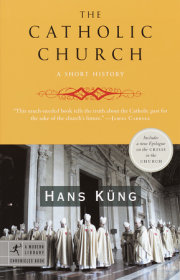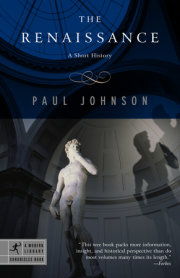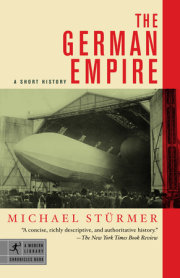Chapter 1
Prelude: A London History
One of the best ways to see London, at once and as a whole, is to climb Hampstead Heath and look down from Parliament Hill. On a clear day, from this northern vantage point, the eye can stretch across the teeming, chaotic expanse, taking in familiar landmarks, such as the winking giant tower of Canary Wharf to the east, or the dome of St. Paul's directly ahead, or, to the west, the Palace of Westminster and the Abbey. From this height, we see the northern conurbations of Kentish Town and Camden Town immediately beneath us, we see Regent's Park dotted with trees, and Hyde Park and, far beyond, south of the river, we can look to the suburban sprawl of south London, its terraced houses, its villas, its tower blocks, its churches and cinemas.
What we are looking at is not a city which has been built according to one uniform plan. Here is no grid of numbered streets as in New York, no architectural homogeneity as in St. Petersburg, no rigidly pure urban plan as in post-Napoleonic, post-Haussmann Paris. We see, rather, a group of boroughs, former villages, bursting with life and vigor, but existing in barely controlled social and architectural chaos. From where we stand, with the natural beauties of the Heath behind us, we see little of beauty. This is not one of the great city views of the world, such as we might take in from the Pincio or Fiesole when gazing upon Rome or Florence. Little that we look upon would seem to have been planned. The two great centers of old London-the City of London itself, the square mile, in the east; and the city of Westminster, to the west-are distinct, even today. The villages, swollen to boroughs, which surround and join them by a multitude of overcrowded, trafficky streets, all have their own identity and history.
The history of London is therefore by its very nature a collective history, a kaleidoscope of many stories rather than a book with one author or one theme. Moreover, because of the size and fluidity of London's population, because of its constant change and growth, much of its story is hidden from us. Workmen gouging out the earth for a new building can suddenly unearth for us evidence of a lost London, the outlines of an old theater where Shakespeare acted, the conduit of a medieval waterway, or paving of Roman times. Sentiment will always be stirred by such discoveries and, in some cases, the few fragments of a forgotten past will be preserved or reclaimed by archaeology. One suspects that there have been many more cases in the history of London's construction industry when, to avoid delays on the new building, the pick or the electric drill has merely obliterated the vestiges of the old in order to make way for the new.
Most London history, like the lives of most Londoners, has passed into oblivion, and what we choose to recover of it, especially in so short a study as this, will be arbitrary. Even as we stand here on Parliament Hill, looking down on the London of the twenty-first century, we become aware of how much is concealed, how much has gone forever. We can see the physical properties of London geography, for example. From this height we can see that the cluster of conurbations which we call London grows up on and around a group of low hills: but although we catch a glimpse of silver sunlight on the great Thames, which snakes between the gray buildings, we see nothing of the rivers and streams that once flowed down from its hills: the Wandle and the Effra, still visible in south London; the Walbrook running through Shoreditch, through the City and down to the Thames; the Tyburn, rising in Belsize Park and flowing-no more-down Haverstock Hill, through Regent's Park and on, beneath Buckingham Palace. These streams, like the stories of millions of dead Londoners, are now lost to us, hidden from view, dried up or, like the Fleet river, gone underground.
The Fleet, another tributary of the Thames, had its origin in the Hampstead ponds of Caen Wood, or Kenwood, just behind where we stand on Parliament Hill looking down on present-day London. Were we to follow the course of the Fleet, almost every phase of London history would unfold before us.
The western head of the Fleet rose in the Vale of Health (said to derive its name from being unaffected by the Great Plague of 1665), the eastern in the park of what is now Kenwood House. These parts of London, grassy and wooded, remind us of how, until Victorian times, there was an edge, an ending to London's urban sprawl, which was truly rural. When Mr. Pickwick and his friends speculated on the source of the Hampstead Ponds, they were talking not of a rich suburb but of a country village.
Even as late as the 1840s the Fleet, in passing Kentish Town and Gospel Oak, was a stream in open country. The Gospel Oak was so named because preachers once spoke beneath its boughs. Tradition has it that St. Augustine himself, bringing the faith from Rome in the very late sixth century, was the first such evangelist. We do not know whether that is true, or whether he laid the altar stone of what is one of the oldest churches in England, old St. Pancras. (Some say this church, on the banks of the Fleet river, dates from as early as a.d. 313 or 314.) The Fleet, like the story of London itself, is by now subterranean: it crosses under the Regent's Canal and at points is buried as deep as twenty-five feet. By the time it flowed south of St. Pancras Church it had surfaced again. The district known as Battlebridge derived its name from a single-tracked brick structure crossing the Fleet.
Which battle the name commemorates, no one knows. The tradition that it marks the spot of Boadicea's last stand against the Romans is fanciful, as is the conjecture believed by some Londoners that that redoubtable warrior lies deep beneath the ground of what is now Platform Seven at King's Cross Station. In 1830, when George IV died, the inhabitants of Battlebridge erected an octagonal building decorated with pilasters to commemorate that not always popular king. It was completed by about 1836. Some called it, by virtue of the weather vane cross on its roof, Boadicea's Cross, others St. George's Cross, and others still, perhaps unaccountably attributing sanctity to the departed Hanoverian, King's Cross. A stucco statue said to resemble this monarch was seen above its doorway. No obvious purpose for the octagon was found. It was used as a police station, then as a pub, then as a camera obscura. With the coming of the railways, the building was found to be in the way and it was demolished in 1845. "King's Cross" had been in existence for less than ten years, but it has ever since given its name to one of London's seediest parts.
The Fleet crossed what is now King's Cross Road and flowed down towards the Farringdon Road. In this part of its journey, it was called the Hol-bourne or Healing Stream. It was also known as the River of Wells. In its journey from Hampstead to King's Cross, the Fleet has reminded us that London is a collection of villages and towns which until the Railway Age was adjacent to, and indeed part of, open country, farmland. It has reminded us of London's Roman origin and its very ancient Christian past. It has symbolized, by vanishing, the extent to which the railway age, with its concomitant industrialization and overpopulation, changed London forever, destroying and hiding much of its distinctive and lingering past. But as we follow the River of Wells towards the Thames, we meet other aspects of London history. At Lamb's Conduit, which linked the Holborn (Fleet) to a little stream, we are reminded of the wealth of the guilds in the Tudor Age-for it was William Lamb, of the Guild of Clothworkers (Gentleman of the Chapel to Henry VIII), who built this little waterway, once thick with watercress, to irrigate the neighborhood. At nearby Clerkenwell, we remember an earlier London which the Tudor merchants opposed and changed-for by this fons Clericorum (well of clerics) medieval miracle plays were performed, and the Benedictine nuns, as well as the Prior and Brethren of the Order of St. John of Jerusalem, esteemed and used the cleansing properties of the wells.
In later times, the polluted Fleet river was a byword for filth and corruption, a potent symbol for the moral stench of the capital city. Ben Jonson, in the days when the Fleet was still navigable, wondered in 1616,
. . . How dare your daintie nostrils (in so hot a season
When every clerke eates artichokes and peason,
Laxative lettus, and such windie meate)
Tempt such a passage?
Pope in the Dunciad could see the changes which had come upon the River of Wells since St. Bridget's or St. Brideswell had cleansed and nourished the medieval Dominican priory, or Blackfriars. In 1728, Pope wrote
Fleet-ditch with disemboguing streams
Rolls the large tribute of dead dogs to Thames,
The King of Dykes! than whom, no sluice of mud,
With deeper sable blots the silver flood.
"Here strip, my children! Here at once leap in,
Here prove who best can dash thro thick and thin."
The scatological humor, the ugly baptism of the Dunces in
excrement, was a prophetic harbinger of the "gutter press," which would establish itself in Fleet Street two and three hundred years after Pope's comedy of the engrimed hack writers.
There exists in the Guildhall Library a pencil sketch of 1837 by Anthony Crosby, based on the recollections of two very old men in the Charterhouse, of the Fleet Bridge at Fleet Street, with boatmen punting in the fetid, viscous waters, and the old Fleet Market still visible. In the eighteenth century, the Fleet river was still used to transport "great quantities of corn" to the market. Yet the demands of street traffic, coach parks, storage space, and rubbish dumps inevitably led to the filling in of wharves and the building of low bridges, and whole streets, over the Fleet. The Fleet Market went in 1829. So too, in the 1840s, did the old Fleet Prison, in whose walls, as in the waters of the Fleet itself, the very history of London could be read.
Prison, until a late stage in British history, was used as a punishment only in a minority of criminal cases. The chief function of prisons was to hold accused persons or political dissidents in custody until they could be punished, corporally or capitally. This prison, which dates from the time of William the Conqueror, was used in medieval times for what we would call remand prisoners, those awaiting trial. (It was the chief of four prisons along the Fleet, the others being Ludgate Prison, Cold Bath Fields Prison, and Bridewell Prison.) The medieval prisoners seem, from the records in the Rolls, to have been for the most part minor offenders-for debt, disputes about land, and breaches of marital promise. No felons were incarcerated here before the Renaissance period, nor was any prisoner clapped in irons. The most famous medieval prisoner is fictitious: Sir John Falstaff. "Go, carry Sir John Falstaffe to the Fleete," commands the Lord Chief Justice at the end of Henry IV, Part Two.
In the reign of Queen Mary, in September 1553, we find imprisoned there Miles Coverdale, the man whose translations of the Psalms are still sung daily in the cathedrals and colleges of England. "This day appeared before the Lordes, John Hooper, Bishop of Gloucester, and Miles Coverdale, Bishop of Exon." After Catholic Mary persecuted Protestant heroes, her sister, Elizabeth, in the next reign, here incarcerated Catholics. We read in 1582 that the Recorder of London prosecuted one Osborn, a priest and Franciscan friar, for saying mass in the Fleet, where many of his fellow Catholics were imprisoned. It was in the reign of Elizabeth that torture was first used in England. If in the 1580s those maltreated were Catholics, by 1620-21 we read of the Warden of the Fleet, Alexander Harris, persecuting Puritans. Prisoners were now caged and locked in irons.
The old Fleet Prison was destroyed in the Great Fire of 1666. The rebuilt prison witnessed the great century-the eighteenth-of crime and punishment in England. By modern standards there was an extraordinary blend of liberty and brutality in an eighteenth-century prison, reflected in the gallows humor of novels and poems. Upon arrival, a prisoner would be forced to pay his keep, and if money was not forthcoming he would be stripped of his coat; this was called putting down your Garnish. The place was filthy, and if you fell foul of the warden you could find yourself in irons, tortured, whipped, or confined in dung heaps. Beside and against this disagreeable state of affairs was the fact that there were a chapel and a billiards room; in the yard you could play skittles, mississippi (a game like bagatelle), fives, or tennis. On Monday night there was a wine club and on Thursday night a beer club. In 1774, when there were 213 prisoners, the overcrowding in the place was caused by the fact that the incarcerated were joined by their wives and children.
Dickens in Barnaby Rudge vividly recalls for us the dramatic moment when the "No Popery" riots of 1780, orchestrated by Lord George Gordon, turned their attentions to the Newgate and Fleet prisons. The Fleet Prison was burnt to the ground, but rebuilt in 1781-82, and in Victorian times it was one of the many debtors' prisons. It was a humiliation to be put in one of these places (witness Dickens's shame at his father's time in the Marshalsea Prison, richly tapped in Little Dorrit), but in some ways it must have been restful to abandon the capitalist treadmill and become a debtor in the Fleet in the early decades of the nineteenth century. There was a begging grate at the bottom of Ludgate Hill where a prisoner stood collecting money from passersby. It was adorned with the legend "Pray Remember poor Debtors. No Allowance."
In the Middle Ages, the crimes which brought men to the Fleet were comparatively minor misunderstandings over contracts; in the Tudor Age, men and women here fell victim to the religious bigotry of the times and were persecuted for being Catholic, or Protestant; in the great age of commerce the Fleet Prison locked you up for debt. In an age guided by Adam Smith, the worst heresy you could commit was not against God but against Mammon.
Copyright © 2004 by A. N. Wilson. All rights reserved. No part of this excerpt may be reproduced or reprinted without permission in writing from the publisher.

